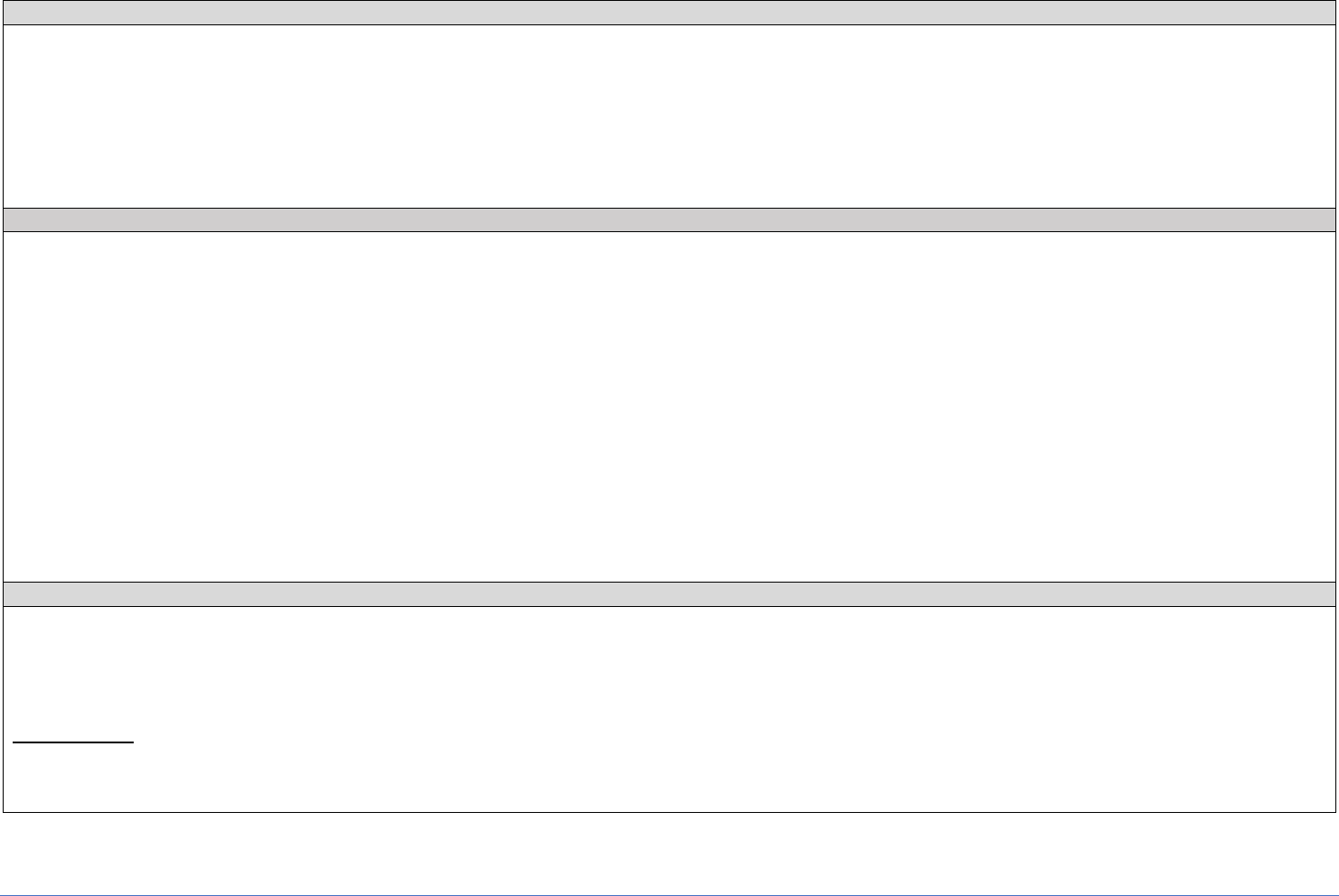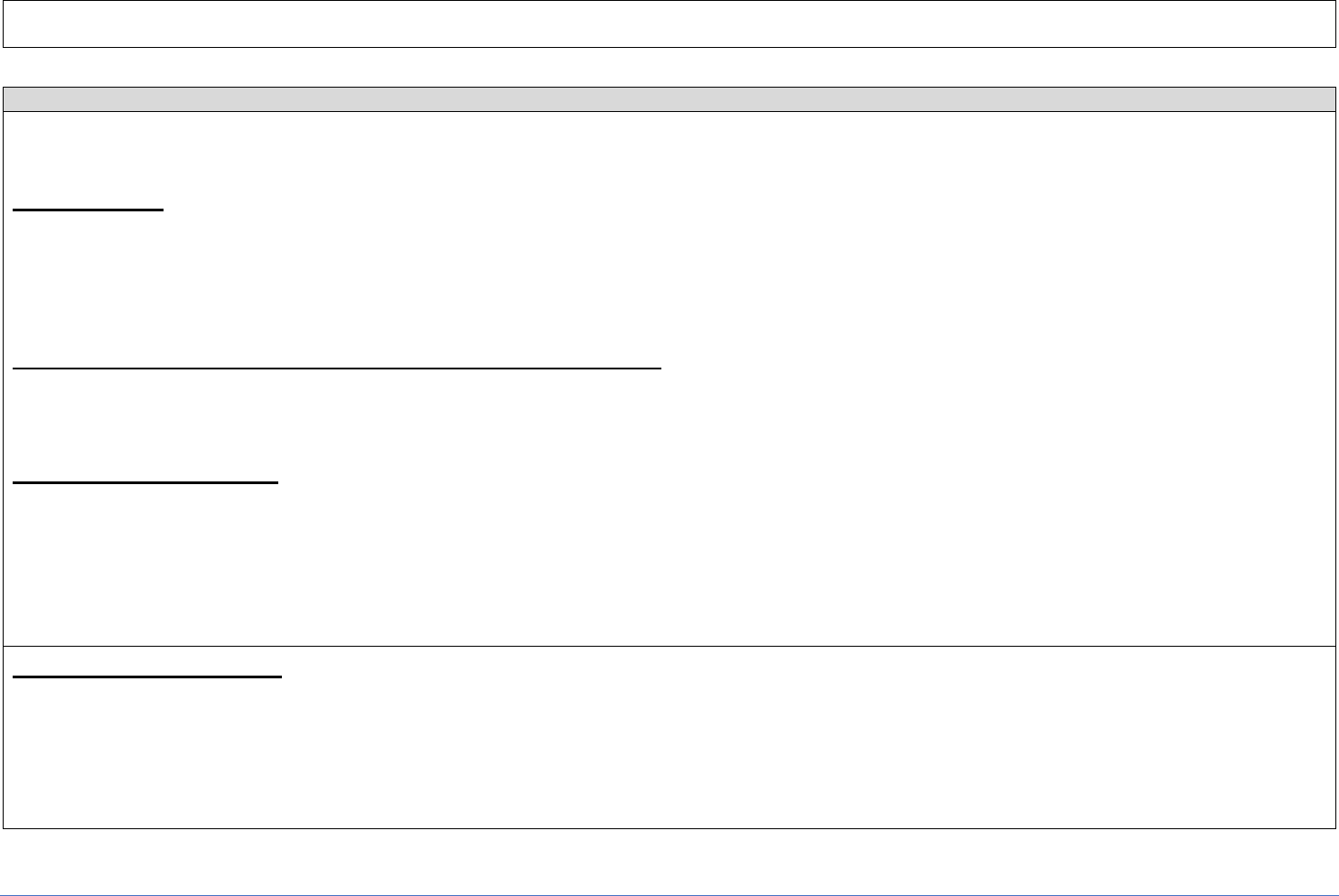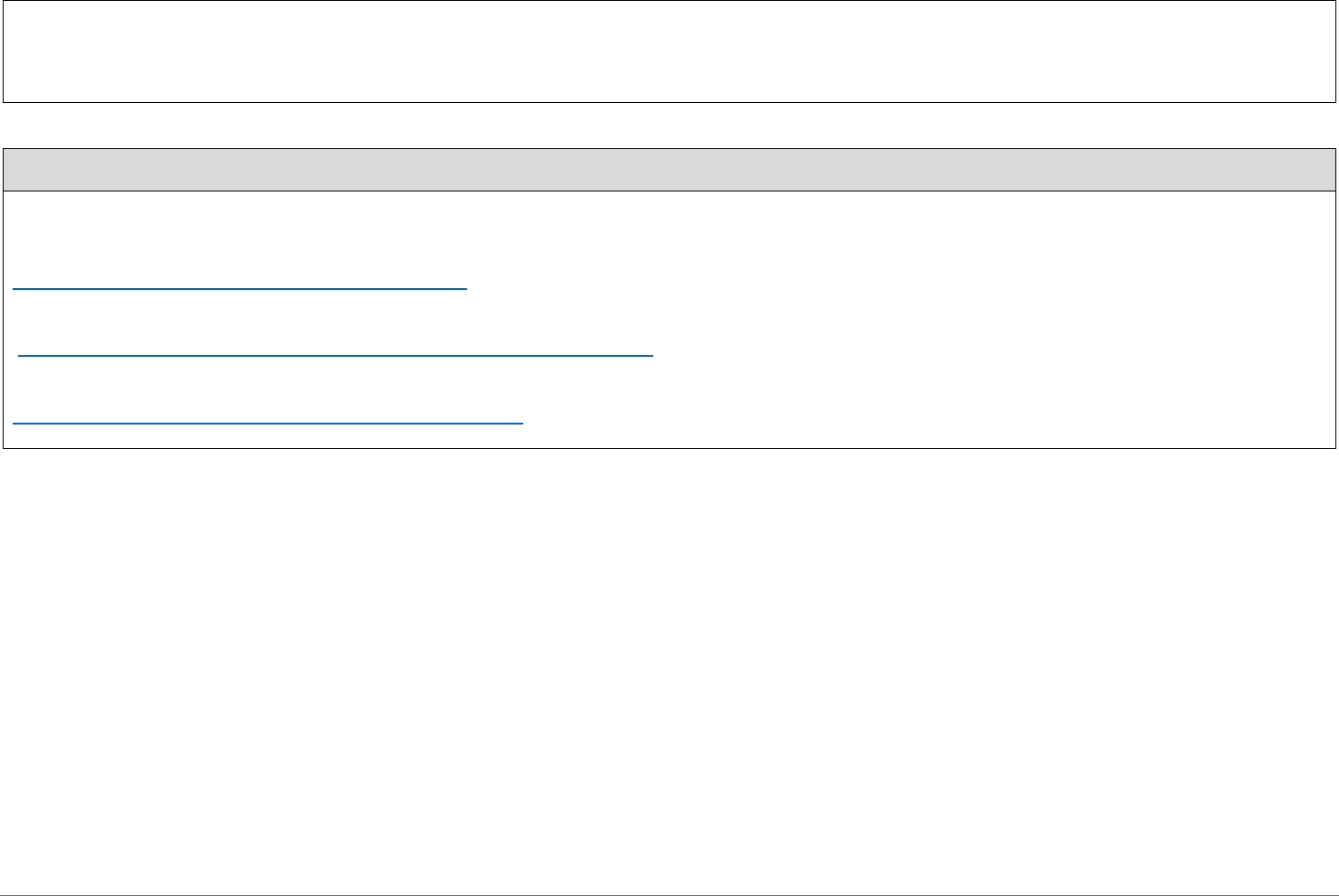
Child Welfare Resources for Substance Affected Infants & Plan of Safe Care
1
Substance Affected Infant & Plan of Safe Care
Child Welfare Policy Manual Resources
March 2021
Substance Affected Infants & Plan of Safe Care
The North Carolina Division of Social Services recognizes the unique needs of infants and their parents and caregiver when substance use is a factor
in the family’s ability to safely maintain the infant in their own home.
The purpose of this document is to provide local county child welfare workers with resources and guidance on assessing the safety of substance
affected infants (SAI) remaining in the care of their parents and caretakers and creating a plan of care that focuses on the unique needs of substance
exposed families.
Definitions - Terminology Glossary
Substance Affected Infant:
• An infant has a positive urine, meconium or cord segment drug screen with confirmatory testing in the context of other clinical concerns as
identified by current evaluation and management standard.
• The infant’s mother has had a medical evaluation, including history and physical, or behavioral health assessment indicative of an active
substance use disorder, during the pregnancy or at time of birth.
• An infant that manifests clinically relevant drug or alcohol withdrawal.
• An infant affected by FASD with a diagnosis of Fetal Alcohol Syndrome (FAS), Partial FAS (PFAS), Neurobehavioral Disorder associated with
Prenatal Alcohol Exposure (NDPAE), Alcohol-Related Birth Defects (ARBD), or Alcohol-Related Neurodevelopmental Disorder (ARND)
• An infant has known prenatal alcohol exposure when there are clinical concerns for the infant per current evaluation and management
standards.
Nighttime Parenting: A more appropriate term for what was once referred to as Safe Sleep. It acknowledges that there are differences in parenting at
night and requires intentional actions by a parent to ensure safety during that time.
Child Abuse Prevention Treatment Act (CAPTA) Requirements
CAPTA and the Comprehensive Addiction and Recovery Act (CARA) requires healthcare providers to notify CPS of all substance affected infants.
The notification itself is not an allegation of maltreatment and requires the assigned intake worker to complete a thorough screening to determine
whether the notice meets the definition of abuse, neglect, and/or dependency.
CPS INTAKE
During CPS Intake activities, the DSS-1402 is completed for all notifications and includes questions that are specific to SAI. The intake worker may
need to support the healthcare provider in making the decision about the information that the healthcare provider can share. However, if this is a
notification of a Substance Affected Infant (SAI), the Intake worker is still required to obtain as much information as possible in the completion of the

Child Welfare Resources for Substance Affected Infants & Plan of Safe Care
2
Substance Affected Infant & Plan of Safe Care
Child Welfare Policy Manual Resources
March 2021
intake form (DSS-1402). The intake worker should pay careful attention to the questions covered in Section VII under the sections of Substance
Abuse and Substance Affected Infant.
Section I: Demographics
Basic demographic information is captured about the alleged victim child/infant. In instances where an infant is identified as a Substance Affected
Infant (SAI) additional information should be gathered to assist the assessment worker in addressing safety for the SAI, the parents and other
caretakers. Asking a question about the discharge date of the infant from the healthcare facility directly impacts the assessment of safety because
remaining in the hospital is a safety measure.
Section VII: Abuse, Neglect and Dependency: Substance Abuse and Substance Affected Infant
Intake workers need to be aware of their own biases or cultural changes around societal acceptance of drug use, such as marijuana. Policy and the
maltreatment tools found on the DSS 1402 guide intake staff not only in the collecting of information but in the screening decision itself. Intake staff
must have knowledge of both policy and the 1402 to solicit the most information from a reporter. While speaking with the healthcare provider you
must ask, “How does their substance abuse affect their ability to care for the child(ren)?” This can be found in the Substance Abuse maltreatment tool
on the DSS-1402. Staff can also ask additional probing questions located in policy such as: “Is the parent using money to buy alcohol/drugs instead
of providing basic necessities – car seat, crib, etc.?” This information helps to assess the level of drug/alcohol abuse and the impact on the child.
Additional specific questions that should be asked must be related to the type of substance and its impact on the infant, if the child is having
withdrawal symptoms or other medical needs, if there are toxicology screening results, and if the mother is receiving treatment related services.
These types of questions help to identify the elements of a safety plan for the infant and their families.
This section also includes questions specific to SAI. When an infant has been identified as being affected by Fetal Alcohol Spectrum Disorder, a
positive drug toxicology not related to Mother’s prescribed and appropriate use of medications, or experiencing drug or alcohol withdrawal symptoms
from a drug other than mother’s prescribed and appropriate use of medication the report should be screened in. This list is not all inclusive. Child
welfare staff should make plans to initiate substance affected infant cases prior to the child being discharged from the hospital to put an appropriate
safety plan in place for the child. Please refer to the DSS-1402 for more detail on screening notifications for SAI.
If the decision is to screen out because this is a SAI notification by a healthcare provider and there are no maltreatment concerns documentation
should indicate “SAI Notification with no maltreatment allegations.” This decision should only be made after the maltreatment tools have been
consulted and a second level review has been done of the intake report. Intake workers should complete the CMARC referral prior to making a
screening decision to ensure that confidentiality is not compromised.
CPS FAMILY AND INVESTIGATIVE ASSESSMENTS
Safety Planning in Substance Affected Infant (SAI) Cases

Child Welfare Resources for Substance Affected Infants & Plan of Safe Care
3
Substance Affected Infant & Plan of Safe Care
Child Welfare Policy Manual Resources
March 2021
When a report is accepted and the infant (0-6 months) is diagnosed by a medical provider as being a Substance Affected Infant (SAI) a Plan of Safe
Care (POSC) must be developed prior to the infant being discharged from the hospital. Safety planning must include a needs assessment of the SAI,
the parents/caretaker and other members of the family including any siblings in the home and how all identified needs will be addressed.
Open and transparent discussions must be held about any substance use disorder or mental health diagnoses, both past and present. Explain that
the reason for asking this information is not to be punitive but to help create a plan that will keep their child safe. Talking with the family about any
history with mental health or parental/family substance use disorder can help connect the family and child welfare with providers familiar to the family.
These discussions with the parent and caretakers of the child/children must include:
- Discussions about how parents access illegal substances (this lets child welfare workers know how connected they are to the use of illegal
substances)
- How often and under what circumstances do they use, known triggers– it is when you understand the “why” that you can help plan for the
“how” to keep the child safe
- Discussions about stressors: new baby in the home, lack of sleep, financial challenges, stress on relationship, etc, and how these are
impacted by substance use
- Plans for keeping the child/children safe knowing that the mother has recently used illegal substances (when the case is accepted and there
is a positive toxicology report, there is no need to get the mother to admit use. The proof is already there, and it is best for the assigned
worker to focus on future safety without getting caught up in the “denial dispute.”)
- Discussions about the significant risk of death for these children due to rollover deaths must be addressed in the POSC which is discussed
below
- Discussions about safe sleep (just because a parent has a crib/bassinet does not mean the parent will use it and it is necessary for any
workers who have contact with the family to have a conversation about the safety concerns of a substance using parent falling asleep while
holding a child)
- Asking the question, “What would it look like if you protected your child as if you believed they could be at risk from your substance use?”
(The answer should be used in the creation of the plan).
The NC Safety Assessment, DSS-5231, is designed to help county child welfare workers “assess whether a child(ren) is likely to be in immediate
danger of serious harm which may require a protective intervention and to determine what safety interventions should be maintained or initiated to
provide appropriate protection.” When using the DSS-5231, Part A: Factors Influencing Child Vulnerability, “Child is age 0-5” should be checked
because this age group is unable to assist in protecting themselves. In Part B: Current indicators of Safety: At a minimum, Item number 1: Caretaker
caused and/or allowed serious physical harm to the child or made a plausible threat to cause serious physical harm in the current assessment should
be circled “yes” and “drug-exposed infant/child” should be checked. Based on the specific circumstances of the case, other safety indicators may
also be present and should be marked and addressed accordingly.
In addition to the indicators of safety identified on the DSS-5231, safety planning for infants diagnosed as a SAI requires additional factors to be
addressed in a POSC as the safety of the child is directly tied to the mother’s treatment plan and to the assessment of the ability of other caretakers
to assist in the care and supervision of this infant (and any other children in the home). The POSC is developed with the parent/caretaker, family

Child Welfare Resources for Substance Affected Infants & Plan of Safe Care
4
Substance Affected Infant & Plan of Safe Care
Child Welfare Policy Manual Resources
March 2021
members, and any other community resources involved who can assist with ensuring the safety of the child. Each county child welfare agency may
choose how the POSC is documented; however, documentation of a POSC must include each of the elements identified here.
Creating the Plan of Safe Care
Each part of the POSC listed below must be clearly documented and address the specific needs of the SAI and family.
Discharge Date:
It is best practice to initiate an assessment and begin the development of the POSC along with the Safety Assessment prior to the family leaving
the hospital. There are instances when a SAI must remain in the hospital to overcome medical issues that arise from the mother’s use of
substances during pregnancy. In those instances, the needs and services of the SAI addressed in the POSC should begin on the date of
discharge from the hospital.
Household Members and Affected Family or Caregivers of the infant:
Identify the household members: the mother and father, and those who will have caretaker responsibilities of the SAI, also noting if those household
members are identified as using substances. When families are unable to identify a non-using, appropriate caretaker who can ensure the safety of
the child within the home, the agency must consider an alternative placement and that should be documented within the POSC.
Other Identified Participants
The POSC should also identify any other family, friends, or professionals participating in service delivery to the SAI and family. Their participation
should be documented to include role/relationship to the family and what assistance or services they will be providing. This should include the
primary care physician of the SAI and how they will partner with the family to address the needs of the SAI. Those providing substance abuse
services to the caretakers should also be included. If a Temporary Safety Provider is needed, they must be included in the POSC along with the
assistance they plan to provide. This is not an exhaustive list and workers should engage everyone who is partnering with the family to ensure that
the SAI and any other children in the home are safe.
Family Strengths and Goals:
Talking with the parent(s) about what they perceive as their strengths gives the county child welfare worker a place to begin the POSC. Have the
family identify their goals once discharged from the healthcare facility. Goals can focus on breastfeeding, housing, smoking cessation, parenting
support, substance abuse and mental health treatment, and recovery.
• Identified Supports: Have the family identify their supports such as a stable living environment, family and friends, and employment.
• Safety Factors and Protective Factors Present: Have a discussion with the parent(s) and family about what they see as an indicator of
resilience, social connectedness, knowledge or parenting and child development, social and emotional competence of children.

Child Welfare Resources for Substance Affected Infants & Plan of Safe Care
5
Substance Affected Infant & Plan of Safe Care
Child Welfare Policy Manual Resources
March 2021
Infant Safety Plan
Developing an Infant safety plan or POSC should clearly identify and document the parent/caretaker(s) response regarding:
• Nighttime Parenting (rebranding from Safe sleep)-Have the parent explain their efforts they will take to ensure safe nighttime parenting.
Ensure that resources for nighttime parenting are provided and parent(s) understanding of nighttime parenting.
• Follow-up medical care-In partnership with the healthcare provider have a discussion with the parent(s) regarding the current and future
medical needs of the infant. Document upcoming appointments, the plans for referrals, and parental understanding of the information
presented.
• Basic needs-Assess the basic needs of the infant within the home such as housing, food, crib, and diapers. If there are identified basic needs
missing, those needs along with the plan for resolving those needs should be documented. Any other needs that the parent(s) or caretakers
have identified must also be documented along with the plan of resolution.
• Other-Any additional needs that are specific to the infant must be documented and addressed.
Documentation must include the parent(s) agreement with the plan.
Parent Safety Plan
Infant safety is tied to parental behavior. Substance use causes impairments in judgement and behavioral changes that can create increased risk to
the infant. Talking with the parent(s) about their safety plan and the risks to their child should they return to using substances post hospitalization is
meant to be preventive not punitive. Elements of a parental safety plan must include:
A plan that addresses infant safety in the event of a parent returning to active substance abuse. Elements to include: (1) Names, phone numbers, the
address of safe people who will keep the child safe if the parent engages in substances. (2) the location of the bag of supplies ready for the child if
someone needs to come and get the child that includes food/formula, diapers, extra clothing, medications, pediatrician’s number.
A Parent Recovery Support Plan can include: (1) Identified Support person who agrees to check on parent regularly and agrees to protect the
child(ren) if necessary. (2) Attendance at recovery support groups. (3) List of community resources to support having basic needs met. (4)
Identified list of people who are not allowed in the home when the child(ren) are present. (5) A list of reasons to remain abstinent and in
recovery. (6) List of mental health, substance use disorder, and physical health resources available in the community. (7) Completion of a
mental health and substance use disorder assessment and engagement in recommended services. (8) Information on how to access harm
reduction programs and naloxone in their community.
• Mental Health and Substance Use Disorder: Addresses engagement with a provider for an assessment and/or treatment recommendations
that include safety for the child(ren). Explain the purpose of a release of information and parent(s) should be encouraged to complete one.
• Parent Medical Care: Medical Home or Post-Natal Care Plan that the parent(s) will use.
• Other- Any needs that are specific to their ability to ensure the safety of the child(ren)
Documentation must include that the parent(s) have agreed to the plan.

Child Welfare Resources for Substance Affected Infants & Plan of Safe Care
6
Substance Affected Infant & Plan of Safe Care
Child Welfare Policy Manual Resources
March 2021
Services
The POSC should also include a list of the organizations and points of contact for those services that the family is currently receiving such as FNS,
Medicaid, and treatment providers. Any additional organizations and their points of contact that the family identifies as a need should also be included
in the POSC.
Parental Agreement
The POSC must be developed with the parent(s) and family and include any needs for all members of the household. Ensuring that the parent(s)
understand that plan as written should also include parent signature on the plan that indicates their understanding and agreement. The POSC is
separate from the completion of the Safety Assessment but can assist in the development of the family’s safety plan. It is important for the assigned
worker to include all appointment dates and service timeframes for the purposes of monitoring follow through of the plan to include in the case
decision process.
Case Decision:
In addition to the completion of the 5010, staff must also complete the Structured Decision-Making Tools. Starting first with case decision making
requirements:
• Consider and document the specific caretaker behavior that resulted in harm to the child/children.
• Identify the effects of abuse, neglect, and dependency on the child(ren).
• Identify steps taken by the agency or the parents to protect the child(ren).
• Complete the NC Family Risk Assessment (DSS-5230) tool. When completing the DSS-5230, there is likely going to be a score of at least 3
on the Neglect scale (N1. Current report is for neglect or both neglect and abuse will be marked with a point, N6. Age of youngest child in the
home < 2 would be marked with a point, and N9. Either caretaker has/had a drug or alcohol problem will be marked with a point) giving the
family a moderate rating.
• Complete the NC Family Assessment of Strengths and Needs (DSS-5229).
• Review the POSC for compliance to determine what still needs to be addressed to ensure safety.
The score on the DSS-5230 needs to be reviewed in collaboration with the strengths and needs assessed on the DSS-5229 to address the areas that
could be seen as protective factors as well as areas that can place the child at greater risk. Combining these tools as well as the questions to be
asked at the time of case closure will help lead staff and supervisors to the correct case decision.
Case Planning:
When there are continued safety concerns and a case decision is made to send a family to In Home services or Foster Care the POSC becomes a
central part of the foundation for the initial Family Services Agreement (FSA). The plan should consist of behaviorally specific objectives and goals for

Child Welfare Resources for Substance Affected Infants & Plan of Safe Care
7
Substance Affected Infant & Plan of Safe Care
Child Welfare Policy Manual Resources
March 2021
the parent/caretakers to address to keep their child/children safe. The plan moves past the incident and into future safety for the child/children. The
child welfare worker should include those components of the POSC that allows a parent to demonstrate improvements in the safety for the child(ren).
Documentation of work with the parents may be included in the FSA or any other documentation tool the county child welfare agency has developed
if all the elements in the safety plan are included.
Additional Resources
Child Welfare – ACF
https://www.childwelfare.gov/pubPDFs/safecare.pdf
National Center on Substance Abuse and Child Welfare
https://ncsacw.samhsa.gov/topics/parental-substance-use-disorder.aspx
Casey Family Programs
https://www.casey.org/media/SC_Infant-Plans-of-Care.pdf
